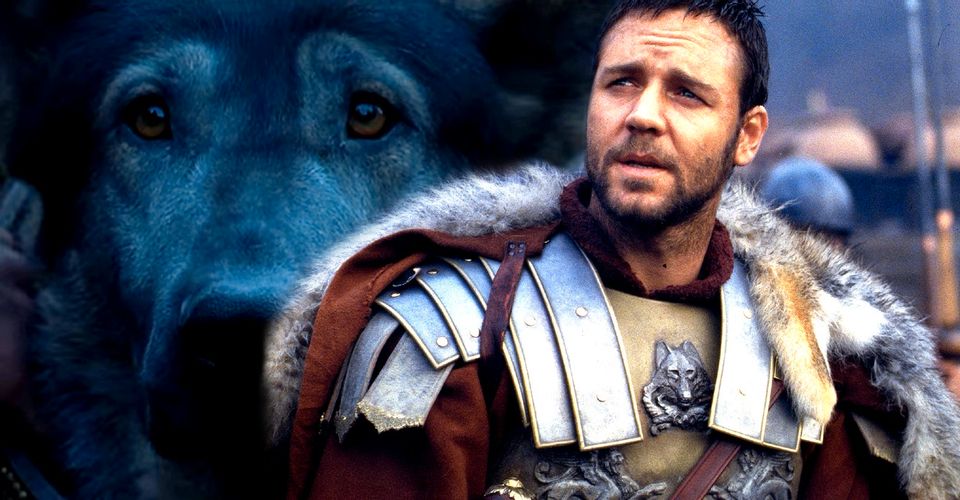Gladiator: Why Maximus Has A Wolf In Battle (& What Happened To It?)

Why does Russell Crowe’s Maximus Decimus Meridius fight alongside a wolf in Gladiator, and what ultimately happens to the animal in Ridley Scott’s movie? Arguably the most famous Roman Empire portrayal in modern cinema, plenty has been said about Gladiator‘s historical accuracy. In Hollywood terms, Gladiator is a relatively faithful portrayal of its chosen period, but many a historian has taken umbrage with Gladiator‘s laissez-faire attitude toward factual accuracy.
Historical fidelity (or the lack of it) doesn’t stop Gladiator being a visual spectacle – and few sequences impress quite like the opening battle. Still a respected Roman General at this point, Maximus leads his army to victory against the local Germanic tribes – an impressive feat of strategy, even if he is conquering a vastly more rudimentary military. Throughout the battle, Maximus has a pet wolf running by his side, fighting fiercely like a four-legged soldier. Maximus is, of course, betrayed after the battle by Joaquin Phoenix’s Commodus and barely escapes execution. His pet wolf, however, is nowhere to be seen. What happens to the creature, and why was Maximus taking one onto Germania’s battlefield in the first place?
Dogs were among many varieties of pet Romans kept, but the wolf held special significance within the empire’s culture. According to Roman mythology, the city was first founded by Romulus who, along with twin brother Remus, was born through divine intervention and saved by a she-wolf after the king ordered both boys killed. Due to the wolf’s maternal role in Rome’s origin, the creatures became symbolic of both loyalty to the empire, and of war, since Romulus and Remus were fathered by Mars, the God of War. Roman armies did utilize war dogs during their conquests – both as scouts and on the battlefield itself – although these were usually Molosser dogs bred specifically for the legion.

Russell Crowe’s Maximus being accompanied by a wolf in Gladiator is rooted in real-world history, then, but is also symbolically relevant to the character, whose loyalty to Rome is beyond reproach (the she-wolf connection) and whose affinity for war is beyond denial (the Mars link). Although Maximus’ pet is intended as a wolf, Gladiator was prohibited from using actual wolves during filming. The canine actor is really a Tervuren Belgian Shepherd, which is why Gladiator‘s “Wolf of Rome” doesn’t look entirely wolf-like running alongside his owner’s horse.
Maximus’ wolf more or less disappears during Commodus’ Gladiator betrayal. Was it killed in the aftermath of battle and sent to Dog Elysium? Was it left thinking its beloved owner abandoned him? Although the fate of Maximus’ pet is ambiguous in Gladiator, it likely would’ve been killed by Commodus’ guards when Maximus gets arrested and sentenced to death. This is an animal that fought by its owner’s side on the battlefield, and would never let Maximus be dragged to his death without making a fuss. Wisely, Ridley Scott doesn’t show the Wolf of Rome’s death, leaving the audience to determine its fate for themselves. Killing the creature onscreen might’ve risked losing viewers, and unlike the shocking reveal of Maximus’ dead family, the wolf’s demise would’ve felt gratuitous, serving little purpose to the plot. Let’s collectively decide that Maximus’ doggo ran away and found a nice Germanic family who gave it a happy life full of bones, treats and walkies, before the Wolf of Rome eventually reunited with Russell Crowe’s character in the afterlife.
About The Author


















